



MIRROR CUBE
Sweden’s Tree Hotel

AZC
Trampoline Rebondissant
La conception est formée de modules gonflables, comme des bouées de sauvetage géantes, de 30 mètres de diamètre. Dans la partie centrale de chaque anneau, un treillis trampoline est tendu. Les bouées flottantes, fabriquées en membrane PVC, sont attachées entre elles par des cordes pour former un ensemble stable et autoportant. Chaque module sous tension – rempli de 3700 mètres cubes d’air – se développe dans l’espace avec une forme en arc. Conçu entièrement en matériaux légers, le projet traverse la seine en un point précis ; il peut bien entendu s’adapter à des dimensions plus ou moins importantes sur d’autres sites. Située en relation directe avec la tour eiffel, l’installation devient le symbole d’une architecture éphémère conçue pour offrir une expérience unique : une vue sur tout Paris.

Doug Aitken
The Garden
The Garden is a living artwork that embraces the dichotomy between the natural environment and a synthetic man-made experience. Aitken’s The Garden installation brings the viewer into the center of the artwork and asks them to physically immerse, participate and become the subject of the installation. Set inside a dark warehouse space the viewer walks inside, their eyes adjusting to become aware of thick lush jungle growing under artificial grow lights. Walking closer, the viewer enters inside the jungle and discovers a huge rectangular glass cube. Inside the glass room is a man-made environment replete with generic elements of modern life: tables and chairs, a cabinet, a sterile tableau set under bright raking lights.
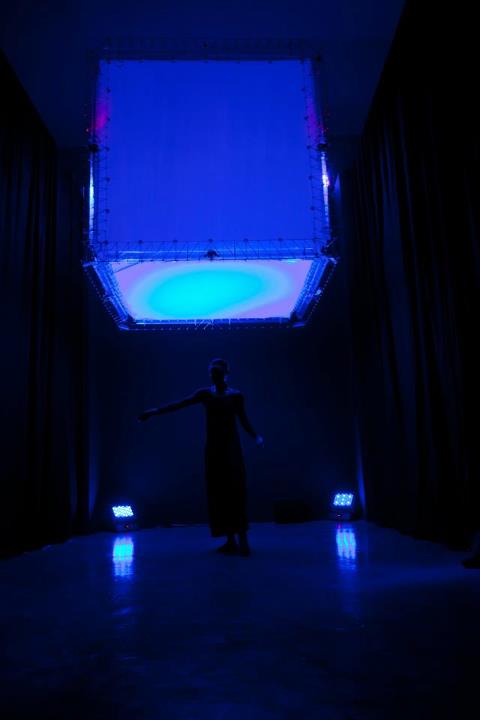
NXI GESTATIO: NICOLAS REEVES, DAVID ST-ONGE & GHISLAINE DOTÉ
Paradoxal Sleep
File Festival
O projeto “Paradoxal Sleep” integra uma série de obras na qual grandes cubos robotizados, medindo 2,25 m3, funcionam como estruturas flutuantes usadas como plataformas para vários projetos multimídia e performances. No FILE 2012, a equipe da NXI GESTATIO apresentará um único cubo que irá se mover nos espaços expositivos. O cubo reajustará constantemente sua posição medindo a distância entre as paredes ao redor.
.
The “Paradoxal Sleep” project integrates a series of works in which large robotic cubes, measuring 2.25 m3, function as floating structures used as platforms for various multimedia projects and performances. At FILE 2012, the NXI GESTATIO team will present a single cube that will move in the exhibition spaces. The cube will constantly readjust its position by measuring the distance between the surrounding walls.
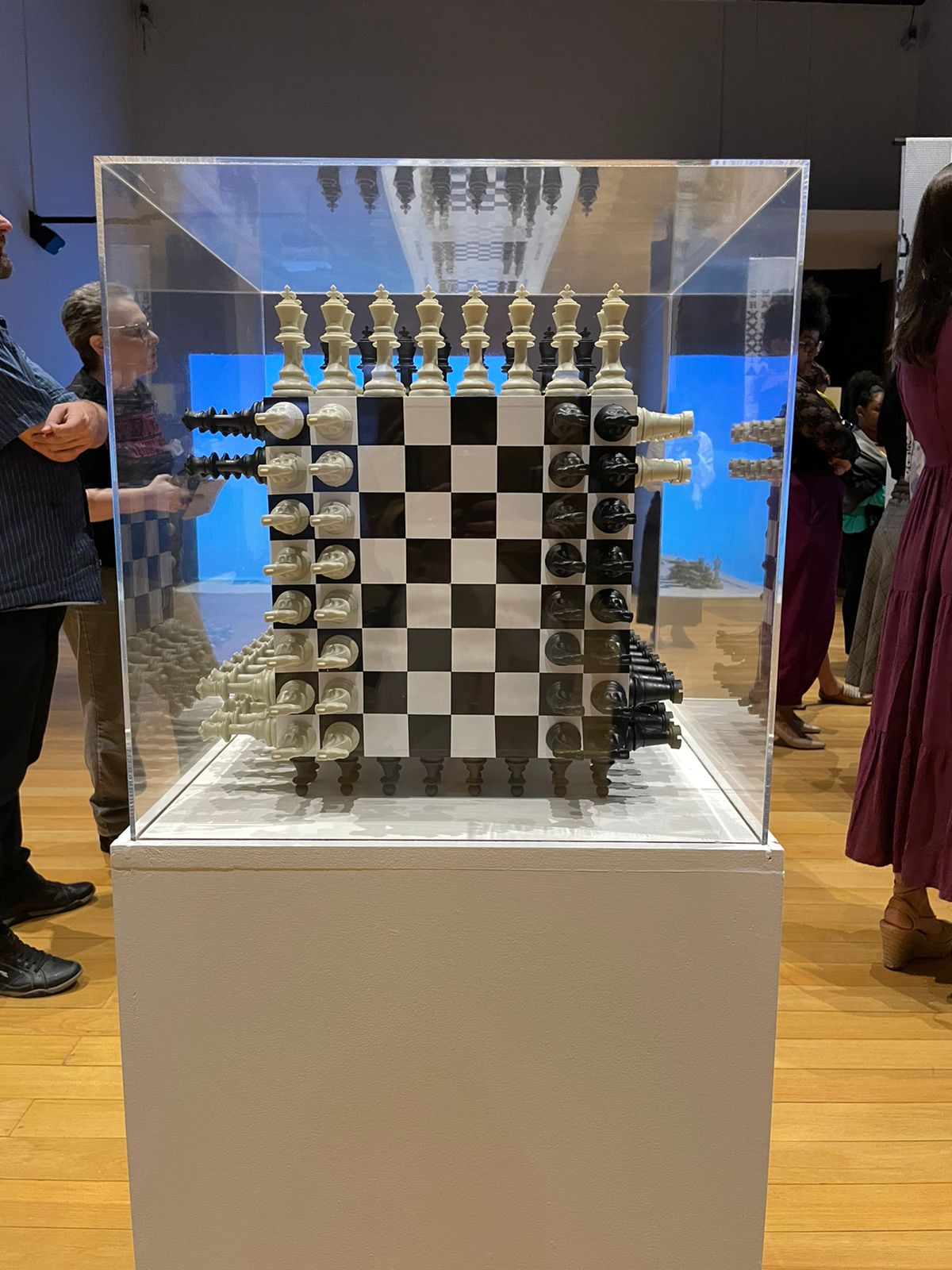
Ricardo Barreto & Raquel Fukuda
Chess Auto-Creative (Self-Replicating)
.
‘Chess Auto-Creative (CHEAC)’, takes the form of a cube where each face corresponds to an 8 x 8 chessboard. The six chessboards can also be arranged in a line to make them easier to see. There are 16 white pieces and 16 black pieces on each of the chessboards, made up of elements such as: kings, queens, bishops, knights, castles and pawns, each of which moves according to the rules of the game. However, instead of the pieces being arranged as normal, they are first set out in patterns where each element is repeated […]Each time a piece is moved to a new position, symmetrically or asymmetrically, a new variation of proto-chess is produced – in other words, a new game emerges. All games generated in this way are, in principle, variations of proto-chess – including the official chess game itself. This means that ‘Chess Auto-Creative’ is not a variant of the official chess game, but its origin.

JOSIAH MCELHENY
Interactions du corps abstrait
Avec “Interactions of the Abstract Body”, McElheny a poussé ces idées plus loin, créant un ensemble de travaux vaste et varié qui examine comment la mode et le modernisme se sont entrecroisés et influencés, en particulier à travers le langage commun du corps. Fondamentalement, McElheny a animé cette dynamique avec la présence constante d’un interprète. En combinant une performance continue en chair et en os avec une sculpture statique dans le même espace de galerie, une première pour White Cube, McElheny rompt radicalement la distinction entre performance et exposition.

OLEG SOROKO
Substance Numérique
La technologie paramétrique permet de générer un système auto-organisateur, c’est-à-dire d’ouvrir l’essence de l’univers comme une infinie variété de systèmes auto-organisateurs possibles. Le monde est en perpétuel processus d’auto-développement, mais ce n’est pas un chaos ni un ensemble de formes connues (cube, sphère, cylindre, à partir desquelles on peut tout construire comme le croyait Cézanne). Tout dans le monde (dans la réalité physique, biologique et autre) est dans des mouvements fluides, flexibles, fluides, accélérants et décélérants qui créent des tensions, des déchirures, des champs de force. Et ils sont incroyablement beaux (les attracteurs et les fractales sont leurs symptômes individuels) et ils existent avant la forme et après la forme. Ce n’est pas un solide ou des lignes dans un espace, mais quelque chose qui se tient avant et après l’espace.

YANN MARUSSICH
der Würfel
„The cube“ ist der zweite Teil des neuen kreativen Zyklus der Performerin. Immer auf der Suche nach den Grenzen des Körpers, versinkt er buchstäblich im Beton.
.
“The cube” is the second part of the performer’s new creative cycle. Always looking for the limits of the body, it literally sinks into the concrete.

Judith Barry
Imagination Dead Imagine
An androgynous head is projected as if contained within a minimalist cube. Sounds of the head slowly breathing fill the space. The head is serene, waiting. Suddenly a substance pours over it from all sides, drenching it in what appears to be a bodily fluid. The spectator wants to turn away but can not, the gaze is compelled through the invocation of the scopic drive. Horror at the repulsive nature of the substance (the abject) is replaced by fascination with the beauty of what might be considered a contemporary sublime.

Tomas SARACENO
توماس ساراسينو
托马斯·萨拉切诺
トマスサラセーノ
Space elevator / Spark
Black polyester rope, plastic cable ties, metal frame.
Having studied as an architect, Tomas Saraceno incorporates physics, engineering, and aeronautics into his interactive and evolving artistic structures. Using arachnology, or the study of spiders, to create structures that suggest alternative ways of living, he employs tridimensional webs to better understand how unique building blocks create distinct forms. Saraceno places spiders in cubic frames and leaves them to spin webs, rotating the cubes at various intervals to introduce elements of freedom

Jonas Vorwerk and Yoren Schriever
Pixel
Les œuvres qu’il crée introduisent souvent des chevauchements surprenants et ludiques entre le physique et le numérique dans l’espace public, où ils sont confrontés à un large public. Ses œuvres ne sont pas destinées à être présentées dans l’espace traditionnel du cube blanc, mais plutôt dans des rues bondées, des festivals en plein air ou des paysages ouverts où elles deviennent un sujet à diverses influences, où elles peuvent non seulement être regardées mais aussi touchées et jouées. L’élément de participation est en fait souvent inhérent à la conception des installations de Vorwerk, qui sont complétées par l’engagement du public. Leur caractère organique leur permet de changer continuellement et d’être toujours influencés par le contexte dans lequel ils sont placés.

Ryoichi Kurokawa
s.asmbli[wall]
Get immersed by 360° projections on a gigantic cube at OCT Loft Creative Festival and surround yourself with the power of nature. Thanks to a well-chosen combination of front and rear projection screens, you can enjoy the immersive fabric projections from every possible angle. To enhance the immersive 360-feel, several mirrors were placed around the eye-catching sculpture, reflecting the high-quality video mapping beautifully.

JEPPE HEIN
杰普·海因
Йеппе Хайн
Јепе Хеин
Extended Neon Cube
Йеппе Хайн (род. 1974, Копенгаген, Дания) – художник, живущий в Берлине и Копенгагене. Хайн хорошо известен своими экспериментальными и интерактивными работами, которые могут быть расположены на стыке изобретений архитектуры, искусства и техники. Его скульптуры и художественные инсталляции, признанные за формальную простоту и частое использование юмора, создают оживленный диалог с традициями минимализма и концептуального искусства 70-х годов. В работах Хайна часто присутствуют удивительные и захватывающие элементы, которые ставят зрителей в центр событий, сосредотачиваясь на их переживания и восприятие в окружающем пространстве.

Marte Marte Architekten
State Gallery
Like a dancing cube shimmering in titanium, the new State Gallery of Lower Austria is placed between the picturesque inner cities of Krems and Stein, and links these with the surrounding natural and river landscape. The spherical curvature and the strongly outward-projecting external walls presented a challenge: titanium shingles and glass panes were individually produced, having been calculated in 3D. Inside, light-flooded areas alternate with daylight-free levels that can be used as required. The project is a strong illustration of the capabilities of the Vorarlberg architectural practice of Marte.Marte.
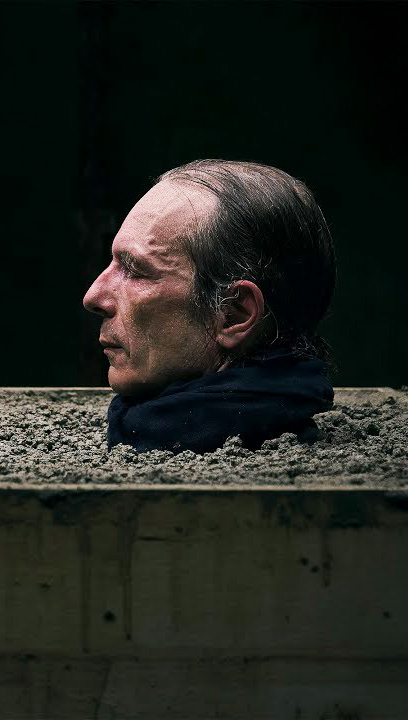
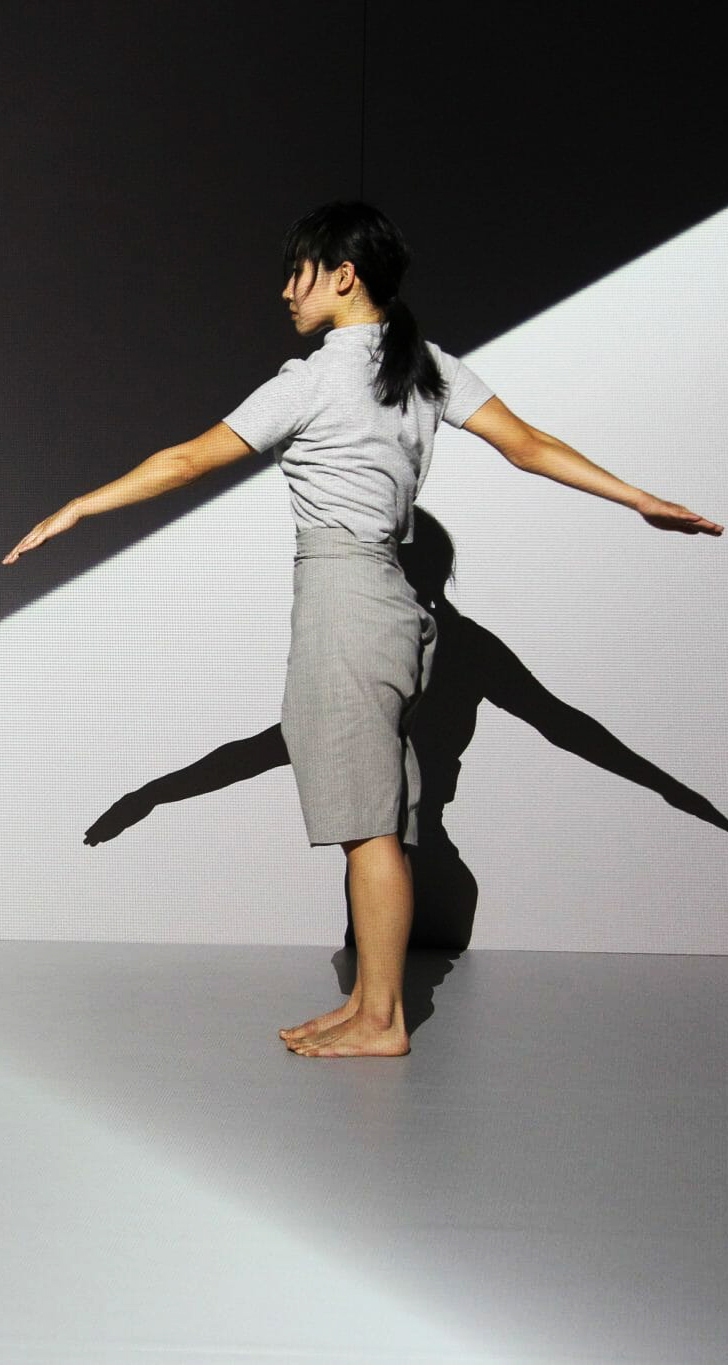
Urbanscreen
Spektrum
SPEKTRUM is an interplay of light, music and the performers. The use of projections in a theatrical context was a very pleasant experience for us, for when projections are used indoors, they can be controlled so precisely that amazing changes of perspective are possible. Once the stage is perceived as a platform, once as a white cube, once the spatial perception itself is completely challenged. As the three different elements of the performance merge into one unified language, SPEKTRUM is able to be many things at once: playful and yet fierce, touching and yet disturbing. Less a narrative than an emotional and sensory experience SPEKTRUM challenges the mind of the spectator in a quite a poetic way.

Ben Katz & Jared Di Carlo
The Rubik’s Contraption
“That was a Rubik’s cube being solved in 0.38 seconds. The time is from the moment the keypress is registered on the computer, to when the last face is flipped. It includes image capture and computation time, as well as actually moving the cube. The motion time is ~335 ms, and the remaining time image acquisition and computation. For reference, the current world record is/was 0.637 seconds. The machine can definitely go faster, but the tuning process is really time consuming since debugging needs to be done with the high speed camera, and mistakes often break the cube or blow up FETs. Looking at the high-speed video, each 90 degree move takes ~10 ms, but the machine is actually only doing a move every ~15 ms. For the time being, Jared and I have both lost interest in playing the tuning game, but we might come back to it eventually and shave off another 100 ms or so.” Ben Katz

Michael Hansmeyer
Subdivided Cube 4
At best, a computational approach enables architecture to be embedded with an extraordinary degree of information. Structure and surface can exhibit a hyper-resolution, with seemingly endless distinct formations. The processes can generate highly specific local conditions, while ensuring an overall coherency and continuity. As such, the resulting architecture does not lend itself to a visual reductionism. Rather, the procedures can devise truly surprising topographies and topologies, offering a thousand unique perspectives. Computational architecture can defy classification, it can evoke curiosity and elicit individual interpretations. The projects presented here forecast an exuberant architecture in which the exceptional supersedes the standard.

Ramy Fischler & Cyril Teste
Exformation, an interactive installation inspired by the concept of “exformation,” was developed for a composition by Jesper Nordin performed by the Diotima string quartet and combines musical, luminous and colorimetric scores. Around the musicians, positioned on a technically equipped stage, three aluminium-edged cubes with LEDs mounted on circular rails move and angle their light in keeping with an algorithmic programme based on analysis of the spectrum, timbre and intensity of the music. This sensitive object becomes a total composition, a poetic, digital entity responding to the work played at its centre.
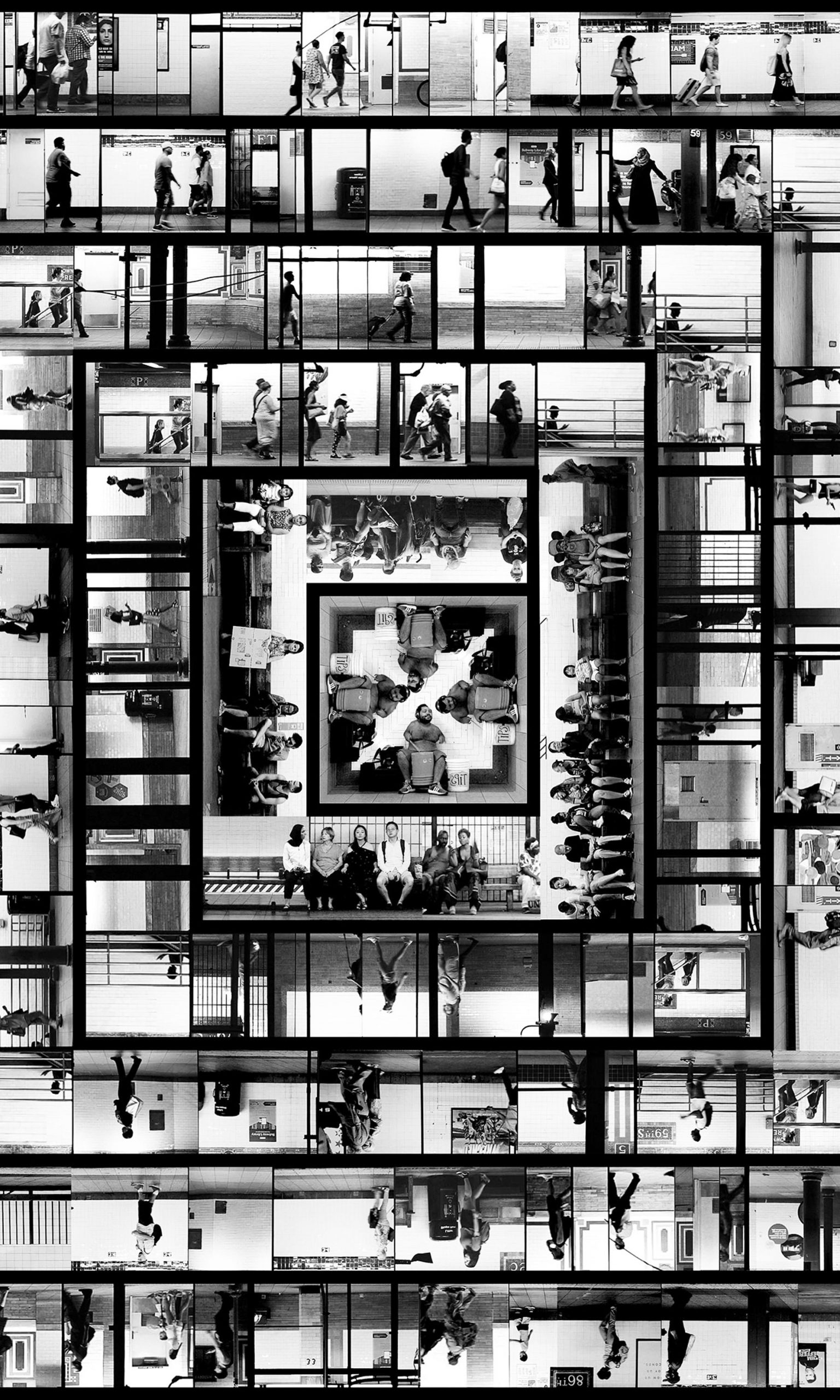
Yuge Zhou
Underground Circuit
Underground Circuit is a collage of hundreds of video clips shot in the subway stations in New York. Station to station, the movement of the commuters in the outer rings suggests the repetitive cycle of life and urban theatricality and texture. The inner-most ring includes people sitting on the bench waiting; the central drummers act as the controller of the movement, inspired by the concept of the Four-faced Buddha in Chinese folk religion, the god who can fulfill and grant all wishes of its devotees. For the installation, the video is projected onto the gallery floor and mapped onto a cube with relief in the middle of the projection area. The installation invites audiences to sit on the central cube as Voyeur-gods, to observe the anonymous characters in the projected urban labyrinth.

JULIAN OLIVER
朱利安·奥利弗
줄리안 올리버
ג’וליאן אוליבר
ジュリアン・オリバー
Джулиан Оливер
Levelhead
FILE FESTIVAL
LevelHead is a spatial memory game. The game takes its inspiration from the “Philosphical Toys” of 18th/19th century Europe and the memory systems (“memory loci”) of the ancient Greeks. levelHead uses a hand-held solid-plastic cube as its only interface. On-screen it appears that each face of the cube contains a little room, each of which are logically connected by doors. In one of these rooms is a character. By tilting the cube, the player directs this character from room to room in an effort to find the exit. Some doors lead nowhere and will send the character back to the room they started in, a trick designed to challenge the player’s spatial memory. Which doors belong to which rooms? There are three cubes (levels) in all, each of them connected by a single door. Players have as a goal to move the character from room to room, cube to cube, in an attempt to find the final exit door of all three cubes. If this door is found, the character will appear to leave the cube, walk across the table surface and vanish. Then the game starts over.

Josiah McElheny
Interactions of the Abstract Body
With ‘Interactions of the Abstract Body’ McElheny pushed these ideas further, creating a large and varied body of work that looks at how fashion and modernism have intersected and influenced each other, especially through the common language of the body. Crucially, McElheny animated this dynamic with the constant presence of a performer. By combining a continuous flesh-and-blood performance with static sculpture in the same gallery space, a first for White Cube, McElheny radically fractures the distinction between performance and exhibition.

Alexander Stublić
Cube
Electronic images of black and white alternating structures and contrasts are projected on a cuboid object in space. Passing through different metamorphosis, the abstract image themes gather momentum in the three-dimensional. Structural unities of image, sound and movement deconstruct the shape of the cube – images and sounds are mutually dependent and explore relations between form and meaning beyond medial image fronts.

László Moholy-Nagy
Light Space Modulator
“This piece of lighting equipment is a device used for demonstrating both plays of light and manifestations of movement. The model consists of a cube-like body or box, 120 x 120 cm in size, with a circular opening (stage opening) at its front side. On the back of the panel, mounted around the opening are a number of yellow, green, blue, rot, and white-toned electric bulbs (approximately 70 illuminating bulbs of 15 watts each, and 5 headlamps of 100 watts). Located inside the body, parallel to its front side, is a second panel; this panel too, bears a circular opening about which are mounted electric lightbulbs of different colors. In accordance with a predetermined plan, individual bulbs glow at different points. They illuminate a continually moving mechanism built of partly translucent, partly transparent, and partly fretted materials, in order to cause the best possible play of shadow formations on the back wall of the closed box”. László Moholy-Nagy

Maya Alam
Interference Fit Canyon
“by Maya Alam uses an entropic drawing process to capture the coalescence of solid and fluid states of matter within a single object. The drawing is comprised of contours that delineate a cube with hard edges that appear to be soft from particular vantage points and soft edges that appear to be hard from others. These contours are mapped back onto the cube geometry in a transitional process whereby the legibility of the cube becomes progressively more inscrutable. The drawing process parallels the effects created by the presence of a cubic object within the L.A. River that disrupts the flow of water and accentuates the presence of detritus. A process of continual erosion acts differentially on the object over time, transforming its appearance and performance in relation to water flow”. Marcelyn Gow
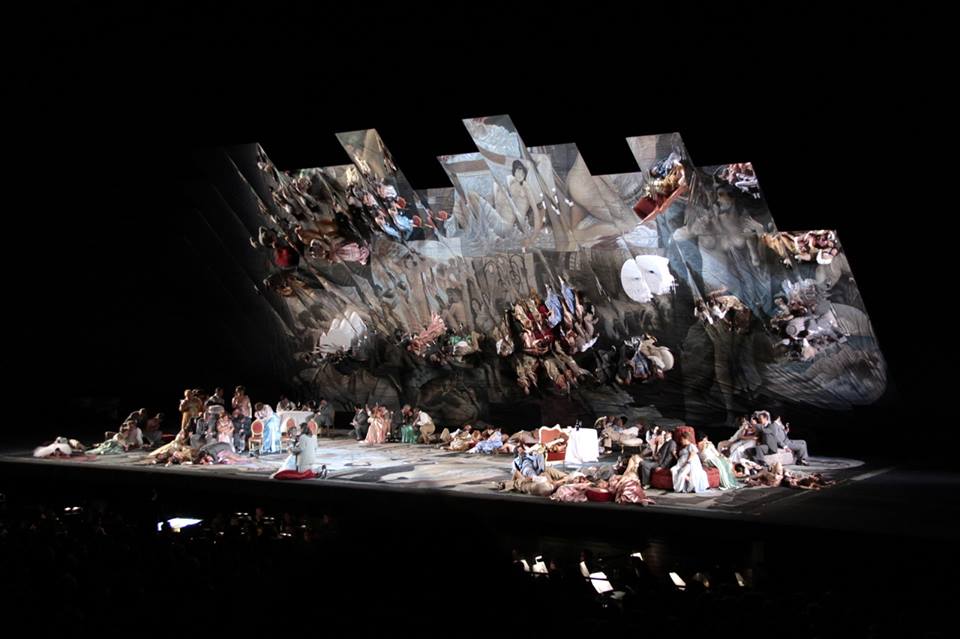
JOSEF SVOBODA
جوزيف سفوبودا
ЙОЗЕФА СВОБОДЫ
la traviata de verdi (Scenografia)
La technologie et la scénographie
Svoboda utilise les techniques de pointe en éclairage, en projection d’image et en mécanique de scène (scène cinétique) afin de s’affranchir des contraintes du lieu théâtral. La scène est pour Svoboda un instrument et un espace magique, lieu d’action de forces dramatiques, réelles, et non pas un espace illusionniste. La scénographie est une des disciplines de l’art théâtral, une composante de la mise en scène et un élément essentiel de la représentation. Elle doit donc d’être dynamique et se transformer dans le temps pour épouser l’action dramatique. La scénographie a un langage propre en tant que discipline à part entière. Svoboda apporte une contribution importante à ce langage par son travail sur la lumière et l’espace.
Lumière, matière et espace
Svoboda dit percevoir la lumière physiquement, et non pas simplement visuellement ; il trouve en elle l’inspiration pour son travail. Tout en reconnaissant son statut ” immatériel “, il la considère comme l’élément fondamental de la scénographie et la traite comme un matériau. D’abord formé en menuiserie, Svoboda affectionne particulièrement les matières brutes, notamment le bois. L’architecture représente pour lui, et ce dès son jeune âge, la somme des connaissances humaines. Formé en architecture d’intérieur, il s’intéresse à l’organisation de l’espace, à la rencontre scénique de l’architecture et du décor. Il privilégie les formes simples : la sphère, le cube et l’escalier. Svoboda croit que ” la mise en scène à l’italienne, bien qu’elle ne corresponde plus aux exigences des méthodes scénographiques actuelles, reste toujours la meilleure “.
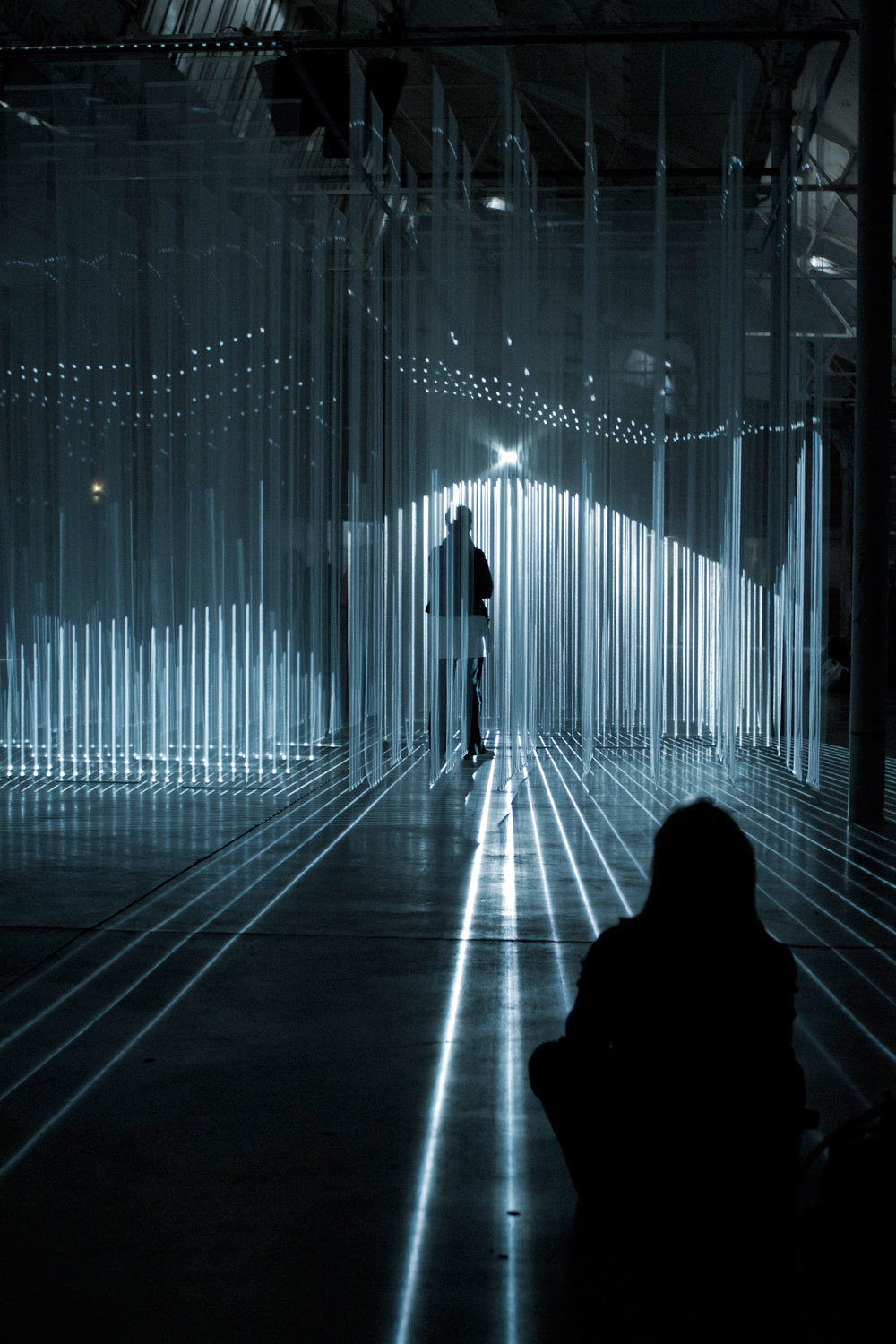
YANNICK JACQUET, JEREMIE PEETERS AND THOMAS VAQUIE
3DESTRUCT
3Destruct is an immersive installation, a large semi transparent cube that generates light an sound, and as the visitor walks through, he loses his landmarks in this non-linear universe that destroys any spacial coherence.
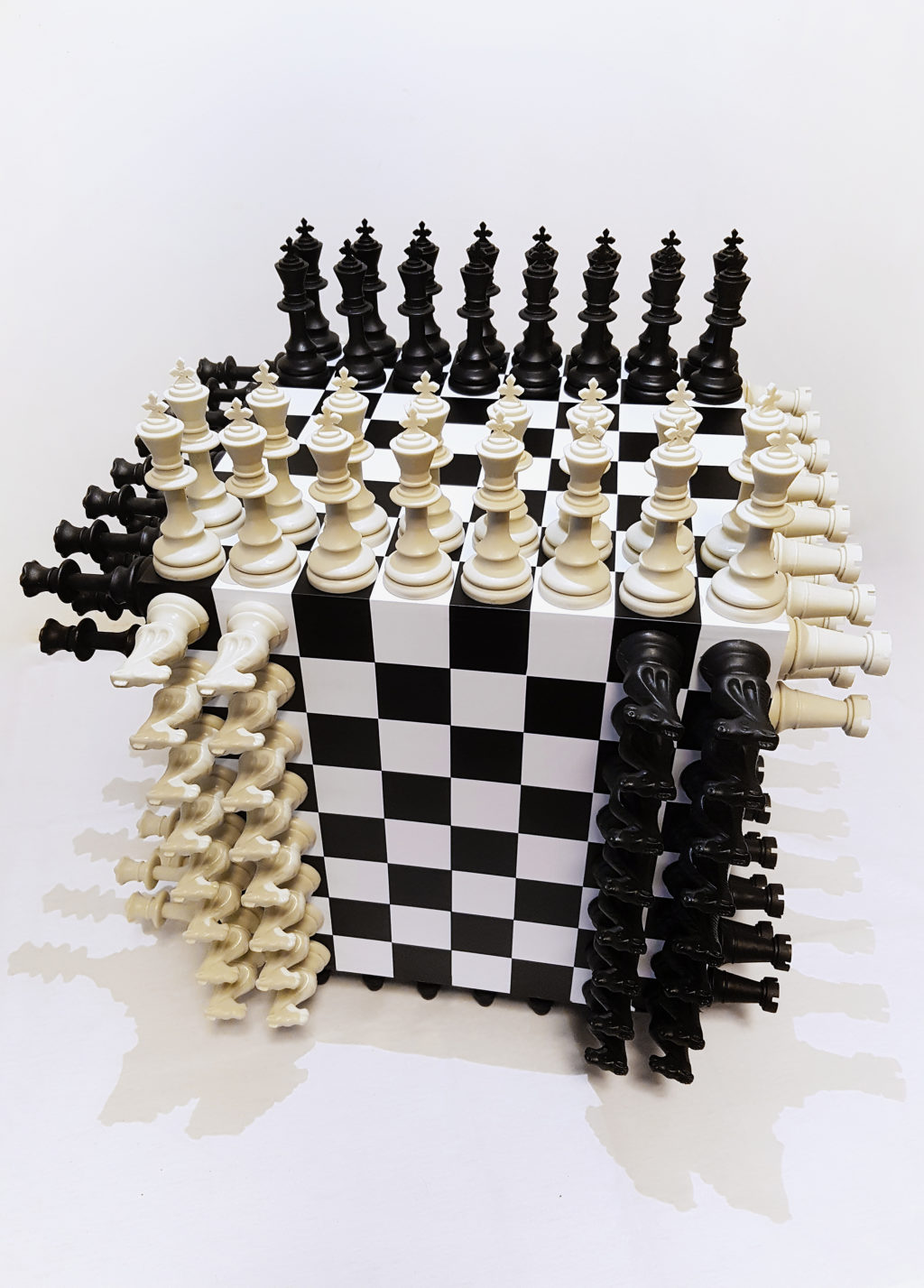
Ricardo Barreto and Raquel Fukuda
Chess Auto-Creative (Self-Replicating )
‘Chess Auto-Creative (CHEAC)’, takes the form of a cube where each face corresponds to an 8 x 8 chessboard. The six chessboards can also be arranged in a line to make them easier to see. There are 16 white pieces and 16 black pieces on each of the chessboards, made up of elements such as: kings, queens, bishops, knights, castles and pawns, each of which moves according to the rules of the game. However, instead of the pieces being arranged as normal, they are first set out in patterns where each element is repeated […]Each time a piece is moved to a new position, symmetrically or asymmetrically, a new variation of proto-chess is produced – in other words, a new game emerges. All games generated in this way are, in principle, variations of proto-chess – including the official chess game itself. This means that ‘Chess Auto-Creative’ is not a variant of the official chess game, but its origin.


Oleg Soroko
Digital Substance
The parametric technology allows to generate a self-organizing system, that is, to open the essence of the universe as an infinite variety of possible self-organizing systems. The world is in constant process of self-development, but it is not chaos and not a set of known forms (cube, sphere, cylinder, from which you can build everything as Cezanne believed). Everything in the world (in the physical, biological and other reality) is in fluid, flexible, flowing, accelerating and decelerating movements that create tension, tears, force fields. And they are amazingly beautiful (attractors and fractals are their individual symptoms) and they exist before form and after form. It is not a solid, or lines in a space, but something that stands before and after the space.

ERIK SÖDERBERG
Organic Cube
GIF
In early 2011 I was exploring the relations of geometry, nature and the human being in a series of 25 pictures that I called ”Fractal Experience”. This is part two – continuing the exploration of geometric shapes, patterns, and fractals with an added element: space-time. This time I’ve worked in 3D and produced a set of animated looping gif’s.
I’ve limited each animation to at most 48 frames, most are around 10-15 frames – to keep the file size small and to maximize the creativity with in these frames.

sam o’brien
An interpretation of the textures of Iceland’s landscape, using synthetic and artificial materials to make the unnatural appear natural in the eyes of the ignorant. Paired with a silhouette inspired by the saturnian symbolism of the cube, these clothes journey from a literal, compromising analysis of the three dimensional cube to a broken down and wearable analysis of the two dimensional cube, the hexagon.

Matteo Zamagni
Nature Abstraction
Nature Abstraction is an immersive sensory experience that explores the arcane forms of fractals, mathematical visual representation of natural and biological forms.
The project gives an insight of their aspects through virtual reality, where they appear as three planets: Birth, Communion and Aether; Each accompained with scores designed to facilitate meditative state and relaxation;The audience is guided to explore these planets and dive into their vast complexities as well as observing the contrast between the entirely digital created world inside the VR against the fully analogue created film projected onto the faces of the cube which have been filmed in real life, recreating using analogue visual effects and various chemical elements.
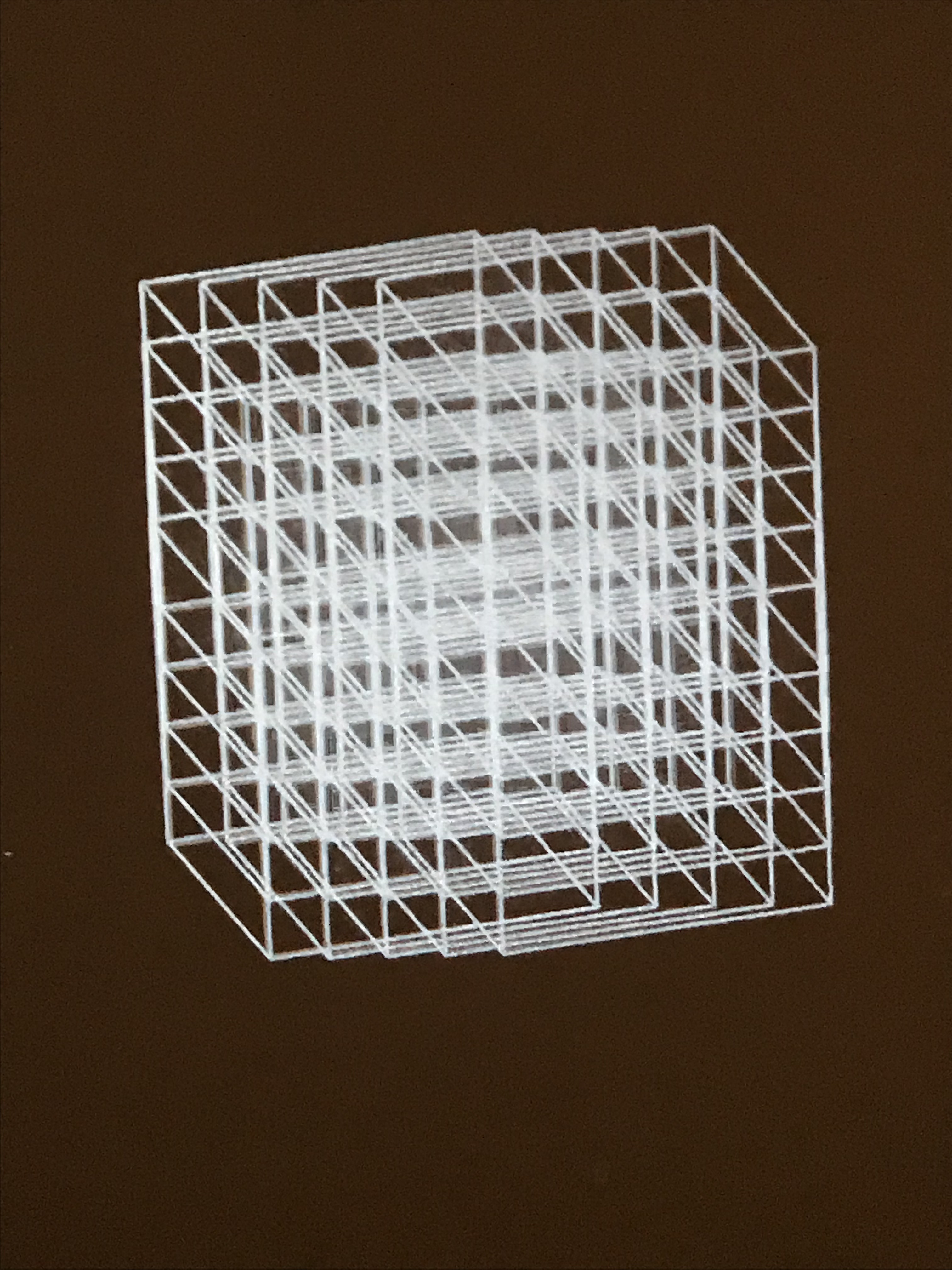
Manfred Mohr
Cubic Limit
In «Cubic Limit,» Mohr introduces the cube into his work as a fixed system with which signs are generated. In the first part of this work phase (1972–75), an alphabet of signs is created from the twelve lines of a cube. In some works, statistics and rotation are used in the algorithm to generate signs. In others, combinatorial, logical and additive operators generate the global and local structures of the images.

Heatherwick Studio
Friction table
This table is made from resin-infused paper, which is incredibly durable, highly sustainable and one of the few materials stable enough to achieve the level of precision required. At 1.8 metres when in its round form and 4 metres when extended to its longest ellipse, the Friction Table can seat groups of eight.

Jessica Eaton
ジェシカ·イートン
杰西卡·伊顿
polytopes
Jessica Eaton’s photographs dissect chemical and optical phenomena, the materiality of film, and the language of light itself. Eaton came to international acclaim through her Cubes for Albers and LeWitt (commonly referred to by the acronym cfaal)—a series of vibrant photographs that deconstruct her studio practice. Like the majority of Eaton’s works, these optically charged images are made by taking multiple in-camera exposures of common studio supplies. Through her abundant use of traditional analog photography practices—such as colour-separation filtering and in-camera masking—Eaton imbues her large-format images with an aesthetic more reminiscent of the paintings and drawings of hard-edge geometric abstraction than the photographs of traditional studio work.

PETER HAMMAR
Time Space Cube
Peter Hammar is a visual artist who creates mixed media collage paintings and installations. His work is in Flux and the status of the work is in question, fragmented, dislocated and failing, exploring the Meta qualities of art, mixing unusual materials with traditional practices. Multiple shaped collage canvases morph into hybrids in an attempt to re-address an ongoing query upon the visually apparent versus the embodied. Found objects altered and juxtaposed and by so, give a new order and meaning to installations that engage in a dialogue within the architectural space.
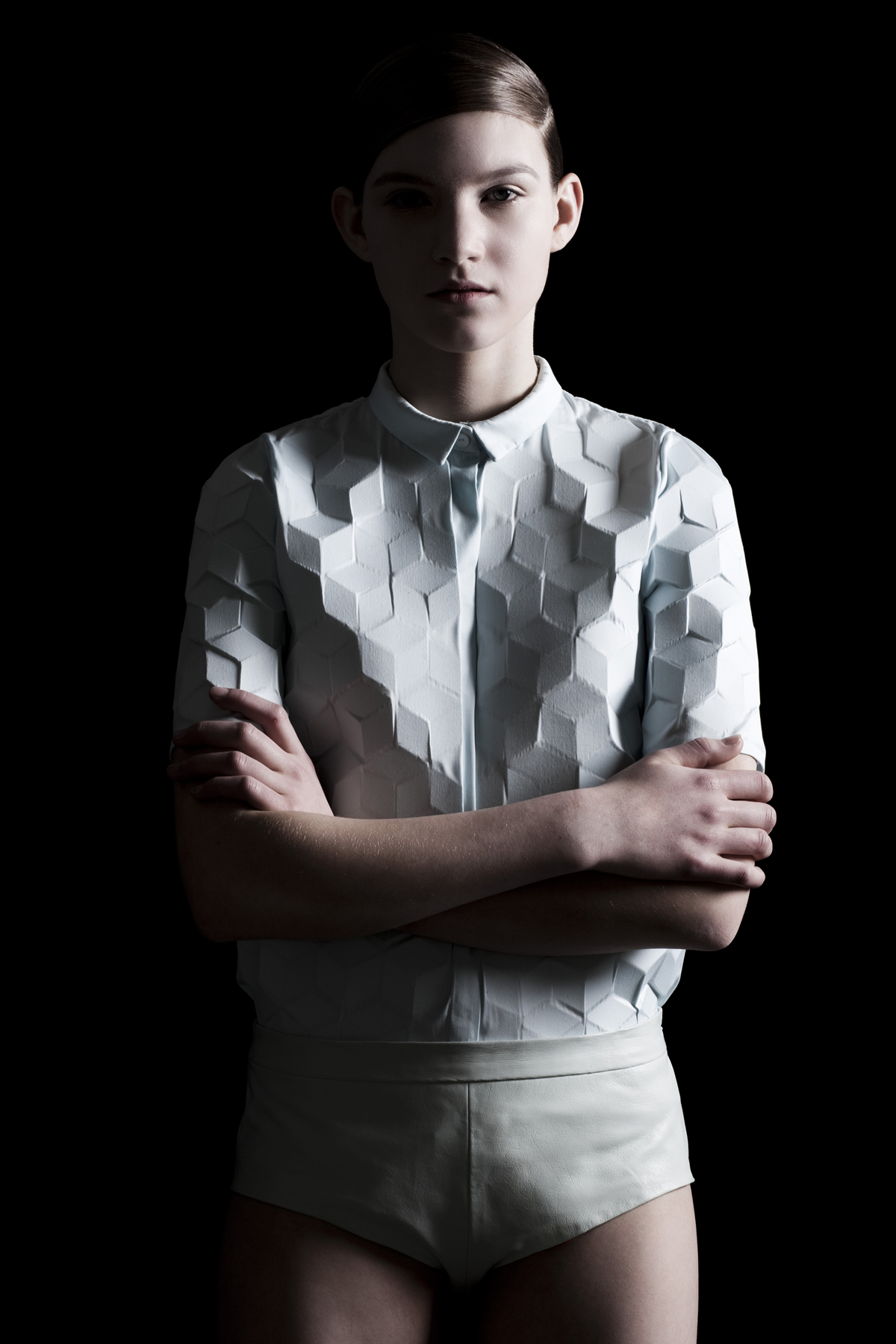
ALBA PRAT
digitalized
“Tron, a cult film from 1982, takes place in two parallel universes: the real and the virtual. Through a laser that converts real people into pixels, the world of Tron appears like a strange foreign world without sun, where androids live surrounded by 3D landscapes. The film has a strong retro character given by the era of production, which coexists with a high-tech nature. Both aspects are the basis of my collection. It consists in androgyn, straight silhouettes out of wool, leather, cotton and lack. Through different techniques I have created cube patterns on the surface of some of the materials. Giving the designs a technical yet minimalist character.”
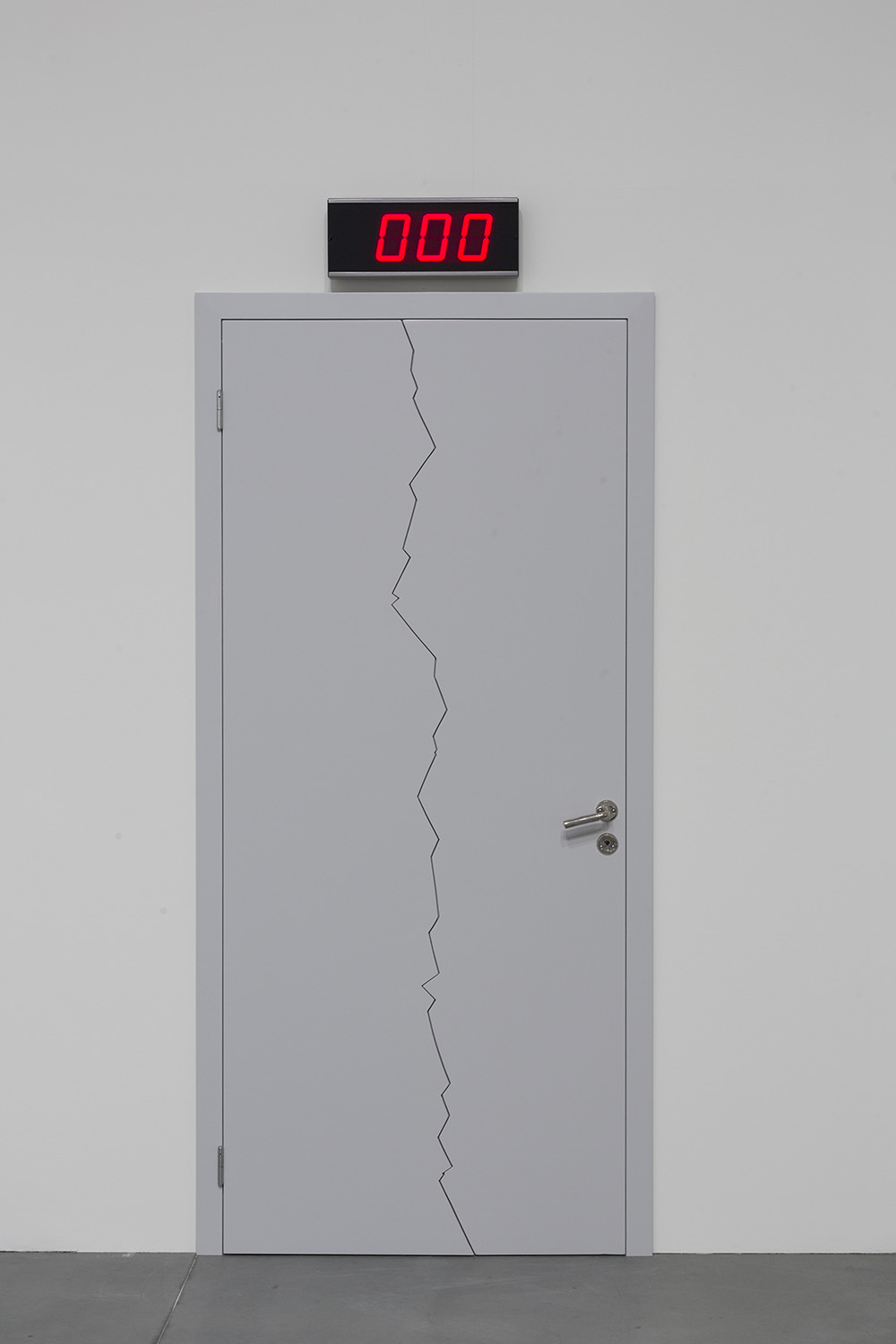
Elmgreen & Dragset
マイケル·エルムグリーンとドラッグセットのエントリ
МАЙКЛ ЭЛМГРИН И ИНГАР ДРАГСЕТ
Collaborating together since 1995 on performances in their early work and now more on creating objects, Michael Elmgreen & Ingar Dragset, raise in their interdisciplinary practice a set of questions concerning the spatial construction of the self and the enforcement of normative behaviours within the architectural frame. During the past few years, Elmgreen & Dragset have been working on the intervention and modification within the White Cube. They create awkward and often cynical situations with objects of everyday life, constantly redefining the familiar. These disruptions of reality are transferred to the gallery space, thus giving rise to new ambiguous spaces.

AKANE MORIYAMA
茜森山
森山茜
cubic prism
Gently responding to wind movements and rain drops, ‘cubic prism’ by stockholm-based designer akane moriyama is a large cube-based structure made out of three different colors of textiles. suspended between two buildings at the goldsmith hall in the university of texas, austin, the piece reacts to environmental factors, as the geometry of a rigid cube is replaced with soft semi-transparent fabrics.

arata isozaki
أراتا إيسوزاكي
이소자키 아라타
矶崎新
АРАТА ИСОДЗАКИ
qatar convention center
Arata Isozaki’s initial concept was based on the holy Islamic Sidra Tree, which symbolizes the end of the seventh heaven. Huge steel columns create a tree-like appearance and an illusion of two trees supporting the roof canopy. The columns of the building grow from two concrete bases along the façade and divide into four branches. These have octagonal cubes as structural cores.
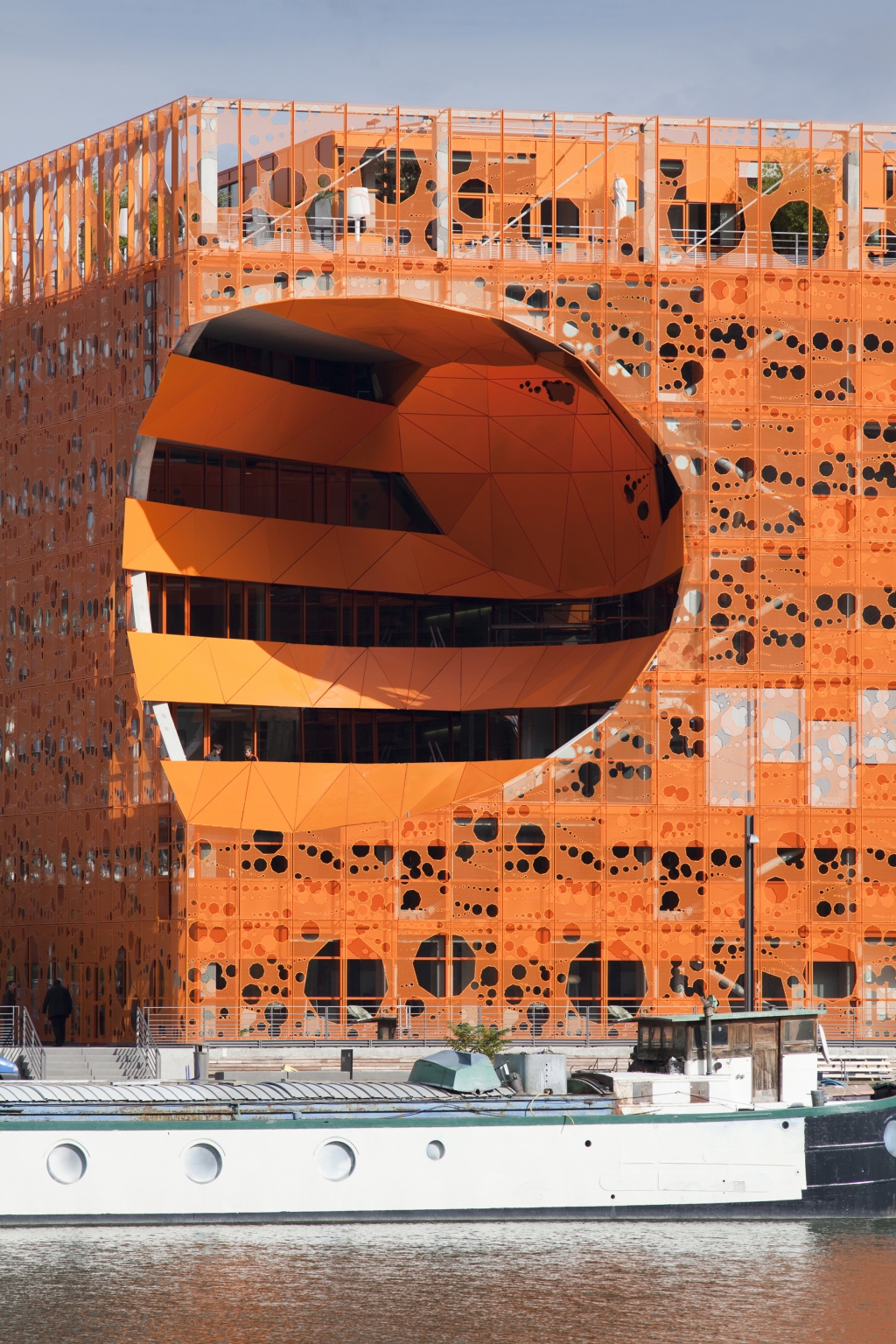
Jakob + MacFarlane
Orange Cube
Le projet du Cube Orange est conçu comme un « cube » orthogonal, dans lequel les architectes ont découpé un grand vide qui répond aux besoins de lumière, de circulation d’air et de vues. Ce vide perce le bâtiment horizontalement depuis les rives de la Saône vers le haut jusqu’à la terrasse sur le toit.
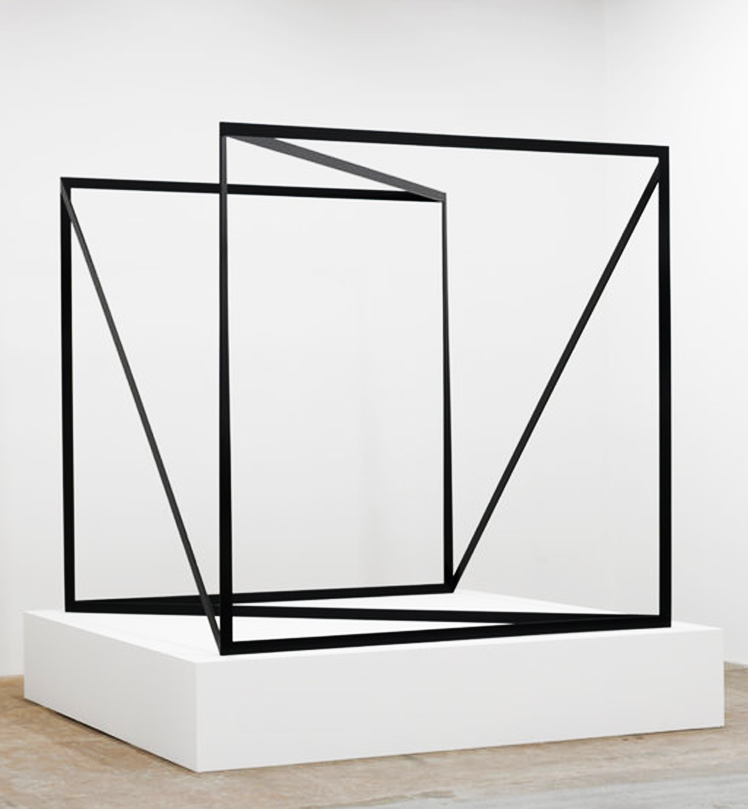



LUDWIG ZELLER
CubeBrowser
CubeBrowser is a six display cube with digital screens that connects to online databases like Flickr.com. The owner is able to move through thousands of image-sets by turning and shaking the small cube in space. The pictures, which are streamed onto the cube from the internet, are grouped by tags. Horizontal turns change images, while vertical turns change to other tags and therefore associations. This creates a situationism-like “derive” in a collaboratively created archival architecture in your hands. What lies next to the mountains, what is next to the sky? CubeBrowser unfolds an awe-inspiring trip through the hidden realms of online databases. Originally, this project has been started with the help of Andreas Muxel and Charlotte Krauß.

Jeppe Hein
杰普·海因
ЙЕППЕ ХАЙН
ЈЕПЕ ХЕИН
burning cube
“我对公共项目的态度以及对公共空间的重新配置,着重于通过将艺术嵌入日常生活领域来将艺术融入日常生活的尝试。我最关心的是艺术品,建筑以及私人和公共空间之间的关系。应该创建空间,物体和观察者之间的关联结构。因此,我的公共项目主要针对特定地点,涉及城市发展和建筑。他们受到该地区背景,氛围和环境以及居民的影响。公共空间的开放性提供了以非常概念化的方式工作的机会。在没有任何制度限制的情况下,自然,空间,公众和周围环境的条件可以被反映出来,然后转化为艺术观念。
我的作品探索了观众,艺术品和环境之间的情况,挑战了艺术在博物馆和公共场所在不同环境和社会环境中的作用。互动是我作品的独特元素,因此观众扮演着至关重要的角色。我的装置为观看者提供了参与作品动作或面对意外惊喜的可能性。
对我而言,雕塑的概念与交流息息相关。对我而言,访问者的直接和实际体验比被动的感知和理论反思更重要。因此,我将雕塑理解为空间和观看者之间的参照系统,并具有传达“运动”过程的能力,以此试图打破传统的态度和对艺术的期望。在大多数当代城市都缺少交流场所(例如,自由,创意的空间和旨在促进互动与交流的区域,需要人们与周围环境及其他人进行对话的场所)时,这一点尤其重要。”

Robert Flynn
راب فلین
רוברט פלין
Робб Флинн
Unstable Cube

